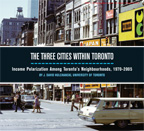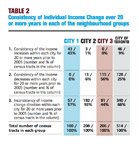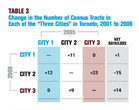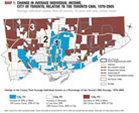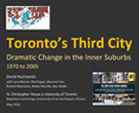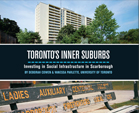11. Polarization need not continue
The polarization of the city need not continue. It is not inevitable. The jurisdiction and financial capacity of the federal and provincial governments are sufficient to reverse the trend. A wealthy nation can use its resources to make a difference. Income support programs that keep up with inflation and are based on the cost of living and tax relief for households in the bottom fifth of the income scale can address inequality. Assistance with households’ most expensive budget item — housing — through social housing and rent supplement programs (which exist in most Western nations), will free up more of a household’s meagre monthly income for other essentials.
The provincial and municipal governments could implement specific policies to help maintain and promote mixed neighbourhoods. These include inclusionary zoning, whereby any medium-to-large new residential developments must include 15% or 20% affordable rental units. Also, the Province of Ontario could keep its promise to end vacancy decontrol — the right of landlords to charge whatever they wish for a rental unit
when a tenant moves — and thereby discourage the displacement of low-income residents in gentrifying areas. Implementation of the Transit City plan and the Tower Neighbourhood Renewal initiative are also essential for making City #3 desirable for both its residents and for a broader socioeconomic mix of households.
The segregation of the city by socio-economic status need not continue. It can be slowed and reversed.
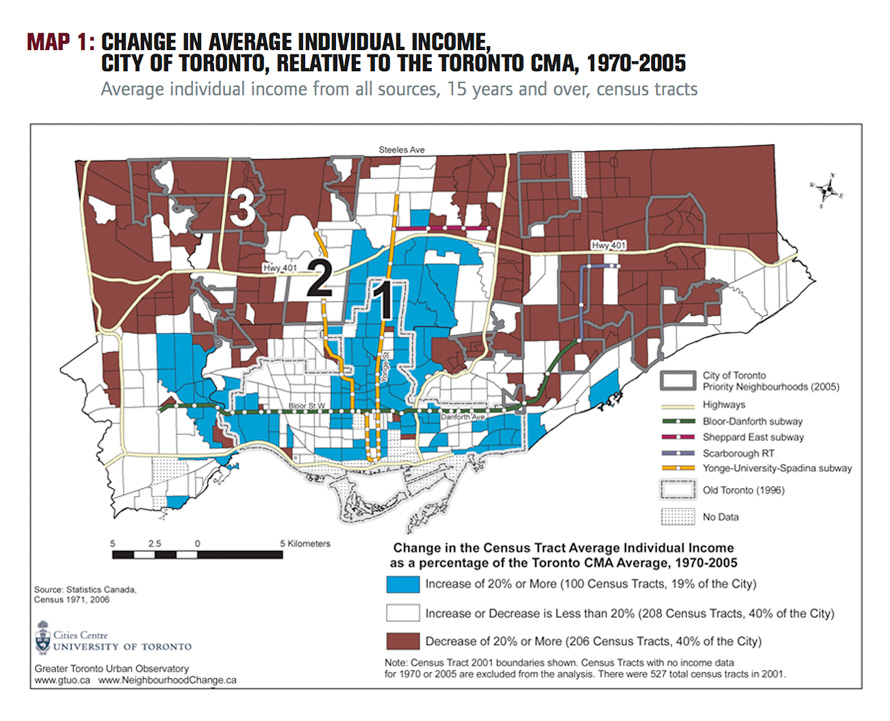
Map 1, PDF
